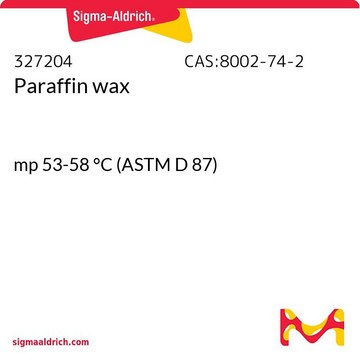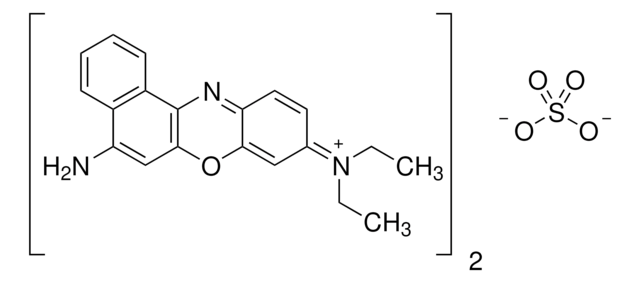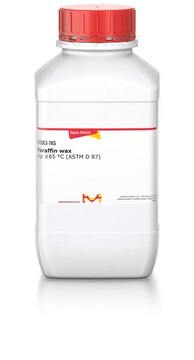243221
Beeswax
bleached
Sinônimo(s):
Cera alba
Faça loginpara ver os preços organizacionais e de contrato
About This Item
Produtos recomendados
Formulário
waxy solid
cor
white
pf
61-65 °C (lit.)
Procurando produtos similares? Visita Guia de comparação de produtos
Categorias relacionadas
Descrição geral
Beeswax is a natural wax that is formed from honeybee Apis mellifera. It is a lipid that contains hydrocarbons, esters and free acids, which can be used to lower the transference of water on films.
Aplicação
Beeswax is used to produce edible films (sodium caseinate, soy protein isolate etc.). It can form a mixture with a variety of fatty acids and polyols to provide flexibile, elastic and stretchable films. It also decreases the water vapor permeability and enhances the mechanical properties of the film.
Código de classe de armazenamento
11 - Combustible Solids
Classe de risco de água (WGK)
WGK 3
Ponto de fulgor (°F)
509.0 °F
Ponto de fulgor (°C)
265 °C
Equipamento de proteção individual
Eyeshields, Gloves, type N95 (US)
Escolha uma das versões mais recentes:
Já possui este produto?
Encontre a documentação dos produtos que você adquiriu recentemente na biblioteca de documentos.
Tensile properties and water vapor permeability of sodium caseinate films containing oleic acid-beeswax mixtures
Fabra MJ, et al.
Journal of Food Engineering, 85(3), 393-400 (2008)
Effect of beeswax modification on the lipid matrix and solid lipid nanoparticle crystallinity
Attama AA and Muller-Goym CC
Colloids and Surfaces. A, Physicochemical and Engineering Aspects, 315(1-3), 189-195 (2008)
Daniel Bauer et al.
Die Naturwissenschaften, 100(1), 45-49 (2012-11-15)
The nests of European honeybees (Apis mellifera) are organised into wax combs that contain many cells with a hexagonal structure. Many previous studies on comb-building behaviour have been made in order to understand how bees produce this geometrical structure; however
R J Stacey
Analytical and bioanalytical chemistry, 401(6), 1749-1759 (2011-06-18)
Residues from medicine containers in the collections of the British Museum have been investigated as part of a wider programme of scientific work on Roman surgical instruments. The cylindrical bronze containers are often described as instrument cases, but some contain
Federico Bernardini et al.
PloS one, 7(9), e44904-e44904 (2012-10-03)
Evidence of prehistoric dentistry has been limited to a few cases, the most ancient dating back to the Neolithic. Here we report a 6500-year-old human mandible from Slovenia whose left canine crown bears the traces of a filling with beeswax.
Nossa equipe de cientistas tem experiência em todas as áreas de pesquisa, incluindo Life Sciences, ciência de materiais, síntese química, cromatografia, química analítica e muitas outras.
Entre em contato com a assistência técnica








